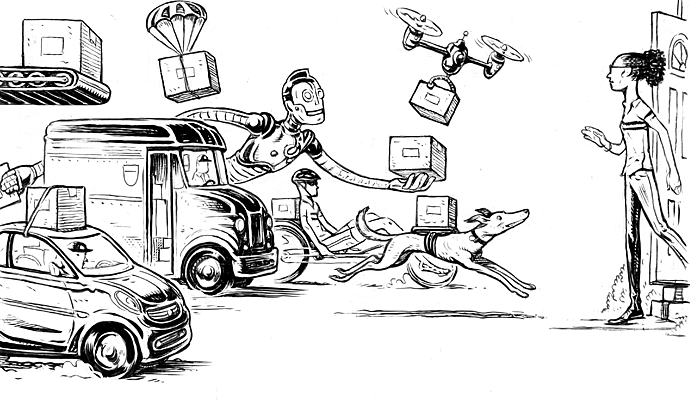The rise of the last-mile exchange

Park yourself at a typical residential intersection in the U.S., and you’ll watch a parade of delivery vehicles pass by over the course of the day. Trucks from FedEx, UPS, and the U.S. Postal Service (USPS) crisscross neighborhoods, retrieving and delivering packages, sometimes more than once. Increasingly, they are joined by trucks from regional shippers such as OnTrac or LaserShip, as well as by unmarked vehicles with non-uniformed drivers, who drop off packages for companies including Walmart and online startups such as Roadie, Doorman, and Sidecar. Soon, fleets of vans bearing Amazon’s logo, operated by independent companies, will be joining the mix.
The rising pace of activity along what’s called the last mile of the retail sales chain reflects the boom in e-commerce. According to the U.S. Census Bureau, e-commerce accounts for about 9 per cent of total retail sales and is growing at a double-digit clip. The number of packages delivered annually in the U.S. is expected to rise from 11 billion in 2018 to 16 billion by 2020, according to estimates from Strategy&, PwC’s strategy consulting business. B2C deliveries, generated mainly by e-commerce, account for more than half of today’s volume and will make up two-thirds of volume by 2020.
In many ways, this seems like a sunny story all around. Consumers have more shopping choices than they have ever had, and their online purchases are delivered faster than seemed possible just a few years ago.
Future-Proofing Your End-To-End Supply Chain For 2023
The storm clouds are gathering, threatening much worse than the current cold drizzle. Bank of…
0 Comments2 Minutes
November 17, 2022
High Expectations: Managing For Value In The Automotive Industry
After a long stretch of undershooting investors’ expectations for Economic Profit (EP) growth and…
0 Comments1 Minutes
November 16, 2022
Leveraging software offerings means looking beyond price
Your company’s software license renewal is right around the corner, and you are anticipating a…
0 Comments2 Minutes
November 15, 2022
Supply chain issues not over yet
SAP SE has released a new survey that finds senior business decision-makers expect the…
0 Comments2 Minutes
November 1, 2022